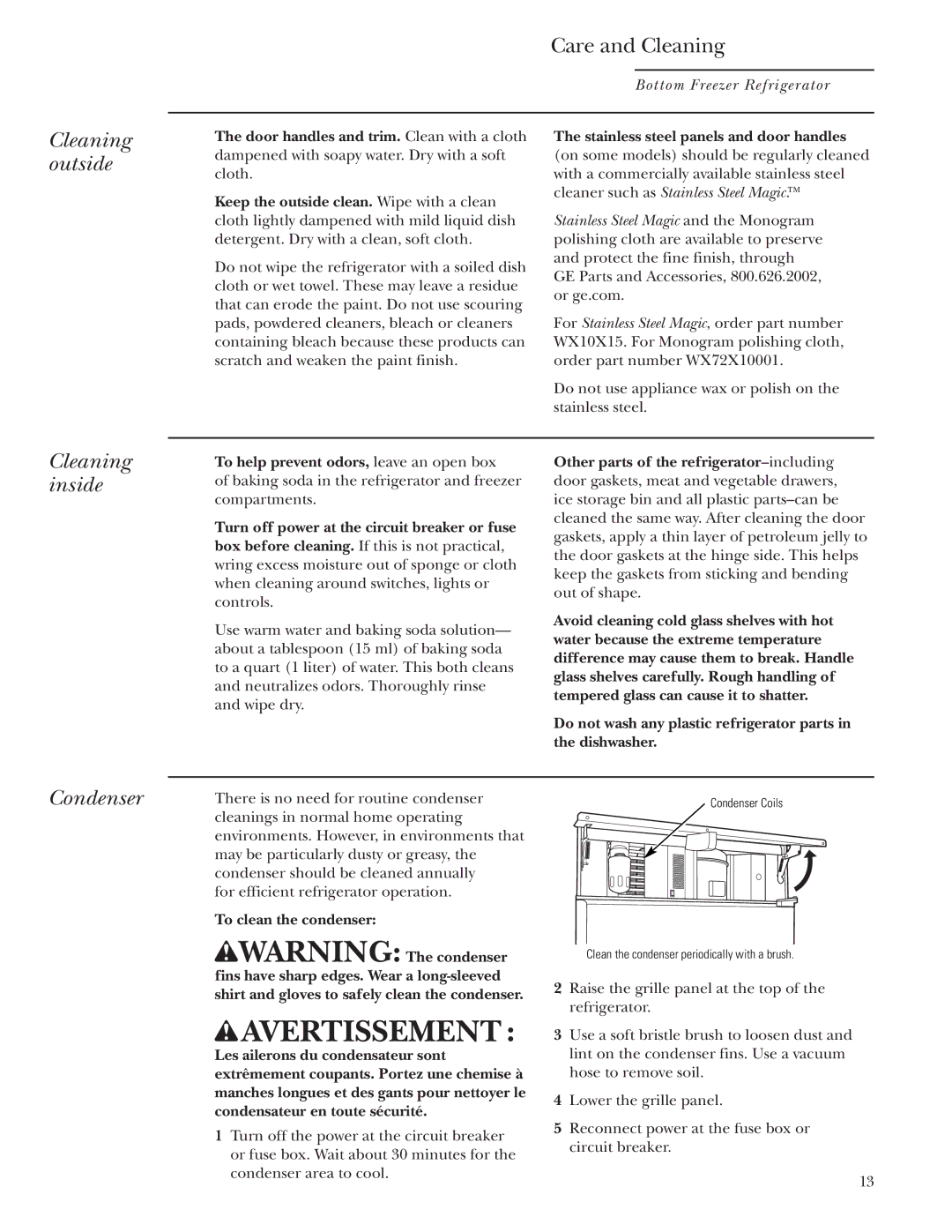Bottom-Freezer Built-In Refrigerators specifications
The GE Bottom-Freezer Built-In Refrigerators represent a perfect blend of style, functionality, and advanced technology, making them a popular choice for modern kitchens. With their sleek design and innovative features, these refrigerators not only enhance the aesthetic appeal of your kitchen but also offer superior storage solutions to meet the demands of today’s households.One of the most notable characteristics of GE Bottom-Freezer Built-In Refrigerators is their spacious layout. The bottom-freezer design allows the fresh food section to be at eye level, enabling easy access to fruits, vegetables, and daily essentials. This design principle is not just about convenience; it promotes healthier eating habits by making fresh foods more visible and accessible.
The cooling technology in GE bottom-freezer models sets a new standard. With advanced features such as the Twin Chill evaporators, users can enjoy optimal humidity levels in both the fresh food and freezer compartments, effectively preventing odors from mixing and keeping food items fresher for longer. This two-fan system maintains consistent temperatures and maximizes energy efficiency, a critical factor in today’s eco-conscious market.
One of the standout features is the adaptability offered by the organization options. These refrigerators often come equipped with adjustable shelves, flexible storage bins, and spacious drawers that can accommodate a variety of items, from large party trays to small containers. The appliance typically includes special spaces for dairy, produce, and deli items, ensuring that everything has its place.
In terms of technology, many GE models incorporate smart features that offer seamless connectivity. Users can monitor and adjust their refrigerator settings remotely through smartphone applications, receive alerts if the door is left ajar, and even troubleshoot issues without requiring a service call.
Energy efficiency is another hallmark of GE Bottom-Freezer Built-In Refrigerators. Many models are Energy Star certified, meaning they use significantly less energy than traditional refrigerators, making them both environmentally friendly and cost-effective over time.
Overall, the GE Bottom-Freezer Built-In Refrigerators combine functionality, advanced technology, and energy efficiency in a stylish package, making them a valuable addition to any contemporary kitchen. With features designed to enhance food preservation, ease of use, and user convenience, these refrigerators cater to the needs of modern families while also promoting healthier eating habits. Whether you are upgrading your current appliance or investing in a new kitchen design, GE's bottom-freezer options warrant serious consideration.

